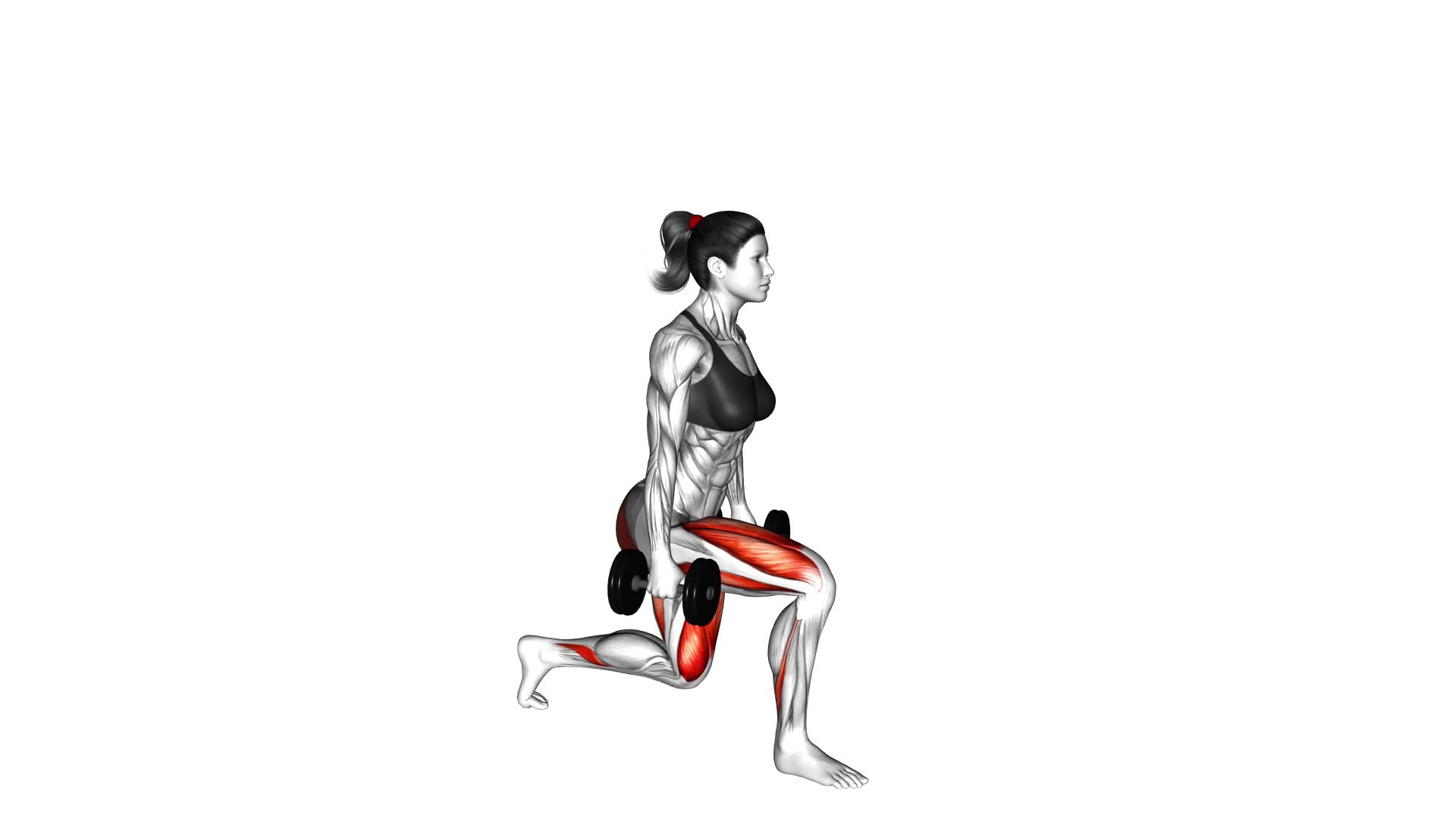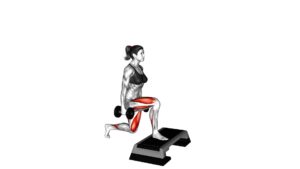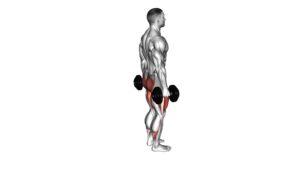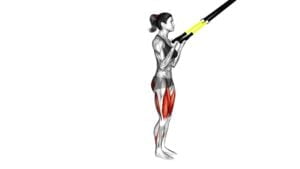Dumbbell Rear Lunge (female) – Video Exercise Guide & Tips

Looking to tone and strengthen your lower body? Look no further than the dumbbell rear lunge.
Watch This Exercise Video
In this video exercise guide, you'll find tips and techniques specifically designed for females. Learn the proper form and discover the recommended dumbbell weight for optimal results.
Plus, we'll share common mistakes to avoid and give you tips for maximizing the effectiveness of this exercise.
Get ready to take your fitness routine to the next level with the dumbbell rear lunge!
Key Takeaways
- Dumbbell rear lunges are effective for weight loss and engage multiple muscle groups.
- Engaging core muscles during dumbbell rear lunges improves balance and stability.
- Dumbbell rear lunges build strength and tone lower body muscles.
- Regular practice of dumbbell rear lunges increases flexibility in the hips and legs, enhancing athletic performance.
Benefits of Dumbbell Rear Lunges for Females
There are five key benefits of incorporating dumbbell rear lunges into your workout routine as a female. First and foremost, it's an excellent exercise for weight loss. By engaging multiple muscle groups, including the glutes, hamstrings, and quadriceps, dumbbell rear lunges help to burn calories and increase your metabolic rate, leading to effective weight loss results.
Additionally, dumbbell rear lunges can be easily modified for beginners. If you're new to this exercise, you can start by performing lunges without any weights. This allows you to focus on mastering the proper form and technique before adding weights. As you become more comfortable, you can gradually introduce dumbbells to increase the intensity of your workout.
By incorporating dumbbell rear lunges into your routine, you can also improve your balance and stability. This exercise requires you to engage your core muscles to maintain proper form, which in turn helps to strengthen your core and improve your overall balance.
Moreover, dumbbell rear lunges can help to build strength and tone your lower body, including your glutes, hamstrings, and quadriceps.
In conclusion, incorporating dumbbell rear lunges into your workout routine as a female offers several benefits, including weight loss, modification options for beginners, improved balance and stability, and increased lower body strength and toning.
Now, let's delve into the proper form and technique for dumbbell rear lunges.
Proper Form and Technique for Dumbbell Rear Lunges
To perform dumbbell rear lunges with proper form and technique, follow these steps:
- Grab a pair of dumbbells and stand with your feet hip-width apart.
- Hold the dumbbells at your sides, with your palms facing inward.
- Take a step back with your right foot, landing on the ball of your foot and bending both knees to lower your body.
- Keep your chest lifted and your core engaged.
- Ensure that your left knee is directly above your left ankle, and your right knee is hovering just above the ground.
- Push through your left heel to return to the starting position.
- Repeat the exercise on the other side.
When performing dumbbell rear lunges, it's important to avoid common mistakes such as leaning too far forward, which can strain your lower back. To maintain stability, keep your torso upright and engage your core. Additionally, make sure to step back far enough so that your front knee stays stacked over your ankle, rather than extending past it.
There are also variations and modifications you can try to challenge yourself or accommodate any physical limitations. To increase the difficulty, you can hold heavier dumbbells or add a knee drive at the top of the lunge. If you have knee issues, you can perform the exercise without weights or try a reverse lunge instead, where you step back and lower your knee to the ground.
Remember to always listen to your body and modify the exercise as needed to ensure proper form and technique.
Recommended Dumbbell Weight for Females
For females performing dumbbell rear lunges, it's essential to select an appropriate weight. The ideal weight for dumbbell rear lunges will depend on your individual fitness level and training intensity. When choosing the right weight, it's important to find a balance between challenging yourself and maintaining proper form.
If the weight is too light, you may not see the desired results, while if it's too heavy, you risk compromising your form and increasing the risk of injury.
To determine the ideal weight for your dumbbell rear lunges, start with a weight that you can comfortably perform 10 to 12 repetitions with. As you progress and become stronger, you can gradually increase the weight to continue challenging yourself. It's important to listen to your body and make adjustments accordingly.
Remember, the purpose of using dumbbells in your rear lunges is to add resistance and increase the intensity of the exercise. The weight should be heavy enough to provide a challenge, but not so heavy that you sacrifice proper form.
Common Mistakes to Avoid During Dumbbell Rear Lunges
When performing dumbbell rear lunges, you should avoid the common mistake of improper knee alignment. One of the most common mistakes people make during this exercise is allowing their knee to go past their toes when stepping back into the lunge position. This can put excessive strain on the knee joint and increase the risk of injury. To maintain proper form, make sure to keep your front knee directly over your ankle and avoid pushing it too far forward.
Another common mistake to avoid is letting your upper body lean too far forward. This can cause your weight to shift onto your toes, which not only reduces the effectiveness of the exercise but also puts unnecessary stress on your lower back. Instead, focus on keeping your torso upright and your core engaged throughout the movement.
It is also important to maintain a steady and controlled pace during the exercise. Rushing through the lunges can lead to loss of balance and compromise your form. Take your time and concentrate on each repetition to ensure proper alignment and engagement of the targeted muscles.
Tips for Maximizing the Effectiveness of Dumbbell Rear Lunges
To maximize the effectiveness of dumbbell rear lunges, focus on maintaining proper form and engaging the targeted muscles throughout the exercise. Here are some tips to help you get the most out of your dumbbell rear lunges:
- Maintain proper form: Keep your back straight, chest up, and shoulders back throughout the movement. This will help to engage your glutes, hamstrings, and quadriceps effectively.
- Engage your core: Tightening your core muscles while performing the exercise will help to stabilize your body and prevent any unnecessary strain on your lower back.
- Control your movements: Slow and controlled movements will allow you to engage your muscles more effectively and maximize the results of the exercise.
- Use appropriate weights: Choose dumbbells that challenge your muscles without compromising your form. If you're a beginner, start with lighter weights and gradually increase as you build strength.
- Try variations for beginners: If you're new to dumbbell rear lunges, you can start by performing the exercise without weights or using a chair for balance. As you become more comfortable, you can progress to using dumbbells.
Frequently Asked Questions
How Many Sets and Repetitions Should I Do for Dumbbell Rear Lunges?
To determine how many sets and repetitions you should do for dumbbell rear lunges, consider your fitness level and goals. Start with 2-3 sets of 10-12 repetitions per leg. This will help build strength and stability in your lower body.
Remember to listen to your body and adjust as needed to prevent injury. You can also try variations like adding weights or using a different lunge stance for added challenge.
Can Dumbbell Rear Lunges Help With Weight Loss?
Dumbbell rear lunges can definitely help with weight loss. By incorporating this exercise into your workout routine, you'll be engaging multiple muscle groups, such as your glutes, hamstrings, and quads, which can lead to increased calorie burn.
Additionally, dumbbell rear lunges offer variations such as walking lunges or alternating lunges, allowing you to switch up your routine and challenge your body in different ways.
Can I Do Dumbbell Rear Lunges if I Have Knee Pain?
If you have knee pain, there are alternatives for knee-friendly lunges that you can try. Dumbbell rear lunges may not be the best option for you, as they can put strain on your knees.
However, there are modifications for dumbbell rear lunges that can help reduce the impact on your knees.
It's important to listen to your body and consult with a fitness professional or physical therapist for guidance on exercises that are suitable for your condition.
Can Dumbbell Rear Lunges Help Improve My Balance?
Dumbbell rear lunges can definitely help improve your balance. By incorporating dumbbells into the exercise, you not only challenge your leg muscles, but also engage your core for stability. This exercise is particularly beneficial for athletes, as it targets multiple muscle groups and enhances coordination.
If you have knee pain, you can modify the dumbbell rear lunge by using lighter weights or performing the exercise without weights. Remember to always listen to your body and consult with a professional if needed.
How Often Should I Incorporate Dumbbell Rear Lunges Into My Workout Routine?
To incorporate dumbbell rear lunges into your workout routine, aim to do them at least two to three times a week. They're a great exercise to include in a full body workout as they target multiple muscle groups, including the glutes, hamstrings, and quads.
Additionally, dumbbell rear lunges are effective for glute activation, helping to strengthen and tone your backside. By regularly incorporating them into your routine, you can enjoy the benefits of improved balance and stronger lower body muscles.
Conclusion
In conclusion, dumbbell rear lunges are a highly effective exercise for females, offering a range of benefits such as toning the glutes, thighs, and hamstrings.
To perform them correctly, maintain proper form and use the appropriate dumbbell weight. Avoid common mistakes such as leaning forward or allowing the knee to go past the toes.
By following these tips and guidelines, you can maximize the effectiveness of dumbbell rear lunges and achieve your fitness goals.

Author
Years ago, the spark of my life’s passion ignited in my mind the moment I stepped into the local gym for the first time. The inaugural bead of perspiration, the initial endeavor, the very first surge of endorphins, and a sense of pride that washed over me post-workout marked the beginning of my deep-seated interest in strength sports, fitness, and sports nutrition. This very curiosity blossomed rapidly into a profound fascination, propelling me to earn a Master’s degree in Physical Education from the Academy of Physical Education in Krakow, followed by a Sports Manager diploma from the Jagiellonian University. My journey of growth led me to gain more specialized qualifications, such as being a certified personal trainer with a focus on sports dietetics, a lifeguard, and an instructor for wellness and corrective gymnastics. Theoretical knowledge paired seamlessly with practical experience, reinforcing my belief that the transformation of individuals under my guidance was also a reflection of my personal growth. This belief holds true even today. Each day, I strive to push the boundaries and explore new realms. These realms gently elevate me to greater heights. The unique combination of passion for my field and the continuous quest for growth fuels my drive to break new ground.







